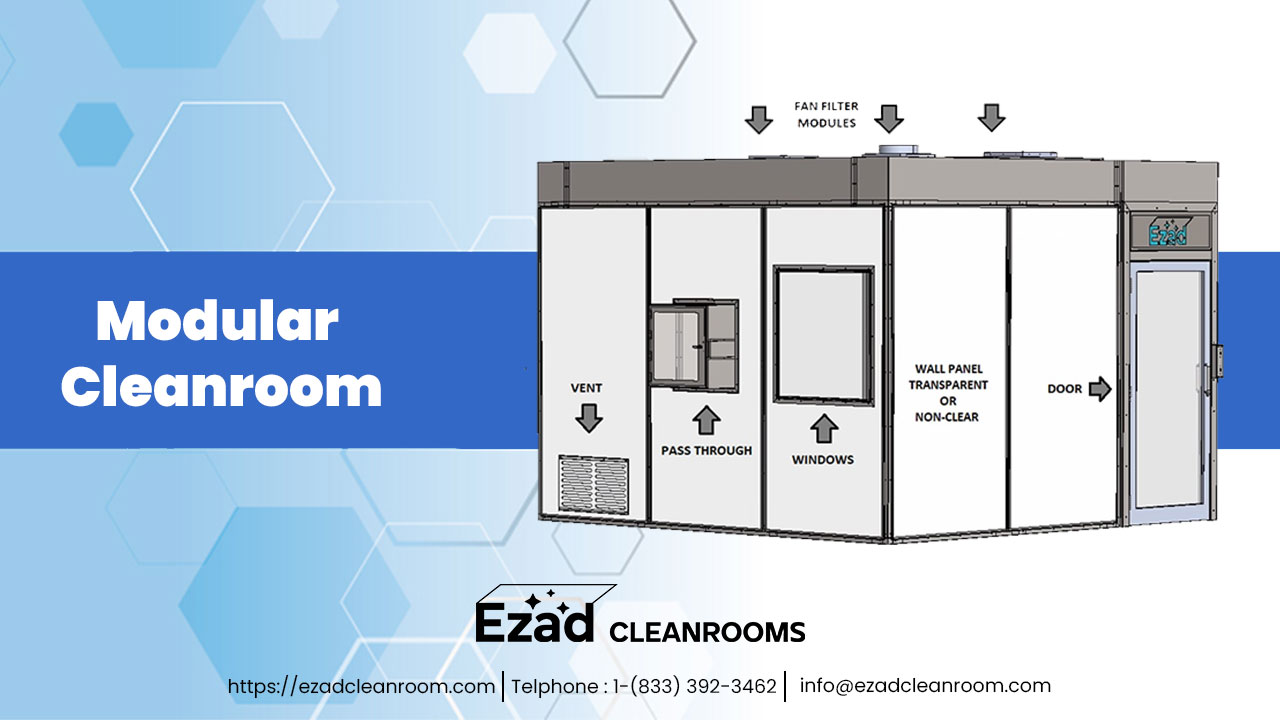Cleanrooms are built to maintain low levels of particulates, which include dust, airborne organisms, or vaporized particles. A cleanroom can be simply defined as an enclosed area that is built within a manufacturing or research facility in order to control the air pollutant levels along with other factors like pressurization, temperature, humidity, and personnel access to meet the critical environmental conditions demanded.
The first of such cleanrooms were created by Willis Whitfield. Though the primary versions of the cleanrooms had witnessed certain problems with the airborne particles, they went on to be advanced and began to be updated and equipped with cutting-edge equipment and research facilities.
The cleanrooms were traditionally used by a range of industries and research facilities like the pharmaceuticals, biotechnology, life sciences, microelectronics, and the food packaging industry. These rooms helped in protecting products and processes from contamination and are extensively used even now for the same purpose and more. Besides, it is important to control the potential contaminants. This will help us ensure quality products, empower the safety of the workers and foster the integrity of the research.
Types of Cleanroom
Cleanrooms have been the part and parcel of a wide range of industries that are concerned with manufacturing products like electronics, pharmaceutical products, medical equipment, and more. The two main categories that the cleanrooms are divided into are traditional cleanrooms and modular cleanrooms.
As soon as you have established the need to construct a cleanroom you should then choose a traditional or a modular cleanroom. Before jumping onto a specific kind of cleanroom, you must be aware of the benefits and the limitations of each along with the answer to why modular cleanrooms are becoming increasingly popular.
Customization & Expansion
In case you are looking to add a cleanroom along with ensuring that you want a certain degree of flexibility from it, then it is the modular cleanroom, which has a higher degree of alteration and expansion, that you should opt for!
Modular cleanrooms can be altered without messing things around yourself or accumulating a pile of debris. Furthermore, it is a really easy process to expand them because with them you only need to add an additional wall, a ceiling and floor systems.
On the other hand, when it comes to traditional cleanrooms, they simply cannot be packed away and set up in any other location as the way you can do with a modular cleanroom. Expanding a traditional cleanroom will require demolishing the existing walls and systems in order to renovate them completely.
Cost factors
If you are considering the costs of setting up a cleanroom along with weighing other factors like the size, classification, and application of your cleanroom, modular cleanrooms could be constructed with a lesser expense than when it comes to the traditional cleanrooms.
In case you are considering a clean storage space, cleanrooms like these would only require a small space. This will make them less pricey than a traditional cleanroom.
Methods of Installation
The construction of traditional cleanrooms is time-consuming and might take months to be installed from scratch. On the other hand, when it comes to modular cleanrooms, you can construct these kinds of cleanrooms quite easily. This is because the process of constructing modular cleanrooms is a simpler process because all of the components to construct such rooms are already manufactured.
If you have a modular cleanroom, you won’t have to build walls from raw materials. Here you can just assemble the components of modular cleanrooms to your specifications and that would do. Therefore, such alterations would take as little as a few days or weeks to complete and would be essential for any operations that need to start soon.
However, if you go for traditional cleanroom construction, then they always require professionals to be installed. Modular cleanrooms, instead, can often be built by your own staff. However, the setup instructions should be clearly provided by the manufacturer in any such case. Furthermore, in many cases, the manufacturer might also offer installation services with a slight additional cost as part of a modular cleanroom design package.
Why are modular cleanrooms important in a laboratory?
Here is a list of defined reasons why you should choose to establish a modular cleanroom in your laboratory:
- They provide a superior air filtration system.
- They help in containing harmful chemicals, gases, and more.
- They offer a controlled environment to research with harmful materials.
- They offer proper lighting at all times.
- They have their doors and entryways secured with limited permission.
- The flooring of these rooms is properly finished.
- The modular cleanrooms are equipped with HVAC and fire suppression systems.
- They are also equipped with UV-safe options and more.
Furthermore, EZAD Cleanrooms can also be expanded and relocated without any difficulties. Therefore, if you are considering a cleanroom, then you can easily go for a modular cleanroom to start or continue with your research.
Original Source: https://www.launchora.com/story/why-are-modular-cleanrooms-important-in-a-laborato


